New Year, New Focus
- Khadijah Muhammad
- Jul 6, 2023
- 5 min read
January-March 2023

After a long Winter Break, Bishop Walker School returned in January ready for deep learning. We warmed up the older scholars’ skills by executing precise searches of the library catalogue online, thereby cementing an understanding of the Dewey Decimal System and exact location of books, genres and authors inside our facility. Younger students refined their abilities to analyze stories by comparing and contrasting familiar tales in literature such as variations of The Three Little Pigs.
Affirmations-Inspired by Black Leaders
We next commenced a reading program that guided scholars to Affirm their Black History by discovering the full stories of artists, activists and visionaries. Our own Brian Harris designed this Black History Month learning activity which we spread out over 3 months because we wanted to take the time appreciate our African American biographies, especially the newly added Coretta Scott King award winners.
Martin Luther King came first as we approached his birthday. Scholars found books at all reading levels covering King’s life, challenges, even drafts of speeches.
Readers of all ages use the earliest leveled books to gain information. And emerging readers enjoy leafing through the more advanced biographies to see photos and captions that cover one man’s historic life. Libraries allow us to explore our interests at any level, in every direction.
Over 50 Biographies
From there we focused on biographies for each age group still using the Affirmations as a guide. We took a category such as artists to group together various historic fine artists. First grade learned of DC artist Alma Thomas through a new biography. We then used marker to create the colorful concentric circles, just to feel her unique style of presenting nature through art. While older grades learned of Jacob Lawrence’s style, they could absorb the journey of The Great Migration.
All Ages Learn from Role Models
Second grade heard the life story of Zora Neal Hurston through a new biography that gives us the image of Hurston as a “Story Catcher” who recorded the oral traditions and dialect of the old South by going to small towns and taking time to hear the older folks’ stories. Although our students won’t be reading her books anytime soon, they could understand how important it is to ask questions and listen to what our elders have to say…and maybe write about it.

We also introduced Matthew Henson, the explorer and Benjamin Banneker, both scientists with local roots who brought us a greater understanding of nature by taking risks and recording their findings. While we expected each scholar to pick one biography each week, they continued to have a free choice for pleasure reading. Pizza and Taco were a big hit this year!
The Big Idea
Civil Rights leaders now have biographies that appeal to our youngest scholars. Kindergartners practiced preaching to the birds after hearing that Charles Lewis spoke of God’s love when he gathered the chickens in the yard for feed time. Second graders used those same birds to recreate the Ruby Bridge’s feeling of walking through an angry mob to integrate an elementary school. One bird approaches the flock and they all leave. She keeps coming to school to learn from the teacher and she prays each day that the students will return. Over time, many do return. That’s how we reinforce the meaning of the books we read by reproducing the storyline and discussing the Big Idea.

Bios at Every Reading Level
The upper primary students were offered many examples of how biographies can be formatted: early readers give a quick overview, picture books can offer a useful index, summary and glossary, and short chapter books such as Who Was Frederick Douglass add cartoon illustrations to beef up the rather sophisticated text.

Our Library offers many versions of Barack Obama’s life, from a basic reader to letters, to speeches to his race for President to Pete Sousa’s photo book to Obama’s own memoir held in our Adult section of biographies. 3rd graders scoured the photos of the Oval Office and noticed how young his children were during his Presidency.
In addition to comparing and contrasting different versions of a life story, older students learned of relationships between Black leaders. Mohammad Ali and Malcolm X developed a friendship. They fought in different arenas for the same causes. Our scholars could see the connections.
Opening Our Doors
Affirmation after Affirmation, week after week, we exposed the whole school to dozens and dozens of biographies, mostly written and illustrated by Black talent. During these winter months, visitors came to BWS and were delighted to share these books with our boys. Parents, teachers, even friends of Bishop Walker himself, joined us. One special guest was Dr. Ana Caskin, the daughter of John and Maria Walker. She read to 1st graders each week before she went to Anacostia High School to attend to a Health Clinic there.
Now that we are feeling more protected from Covid outbreaks, the Library has returned to its position as a multi-purpose room. We can hold 50 people for a Founders Luncheon where those who had the original vision for the school could meet to honor those who propel that vision forward. Mrs. Marquardt asked for particular memories of John T Walker to inform the Timeline she initiated with 5th graders.

Parents used the space for meetings. Seniors got special training on organizational skills on Saturdays. And gifts of books were distributed to all grades, with special thanks to St. John’s Lafayette Church.

Black History Is American History
Fifth Grade commenced a project of reading historical fiction covering African American life, writing summaries and placing these picture books along a continuum that shows how Black History is American History. Starting in 1619, Mrs. Ochmanek offered a Starburst reading incentive program to jump-start a deep dive into this history. Students were involved in constructing the 20-foot timeline so that 4 centuries of history could be visualized for the whole school to see. Look to the next BiblioBlog to see the final product.
Do You Know About Our Namesake?
We also chose to take a deep dive of research regarding an individual dear to our hearts but whose life particulars are relatively unknown to our own scholars and teachers: John Thomas Walker. A small group of 5th graders reviewed the written memories collected at the Founders lunch. Mrs. Walker and Mrs. Hannibal were consulted. They looked up Bishop Walker online and reviewed his one biography, Man for the 21st Century. An 8-foot long timeline was created, covering the years 1925 to 1989. His was a rich impactful life: The Great Migration north, The Civil Rights Movement, African Independence movements and acceptance of Gay and Women Priests in the Episcopal Church. Presidents and World Leaders consulted Bishop Walker. And grown adults recall times, as children in St. Joseph’s Chapel, that Bishop Walker’s warm voice seemed to bring forth the Spirit of God.
Finally, 3 student/artists created 12 illustrations for the timeline that are whimsical, touching and devout. The entire class helped construct the complicated visual presentations with tape, cardboard, string and thumb tacks staples and colored paper. Thanks to these 5th graders, now the whole community can learn how our school history intersects African American History, which is American History.
***Come by and hunt for Golden Fact Nuggets as you fill out our John T Walker Timeline Treasure Hunt.





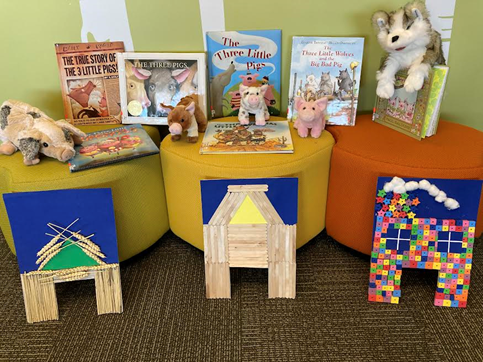

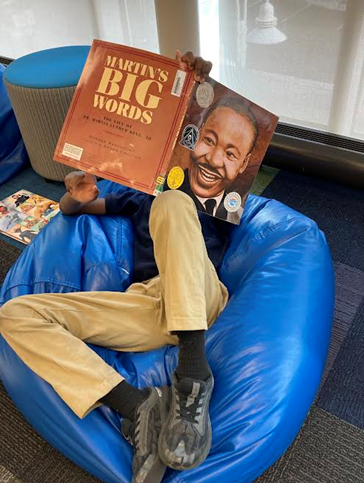

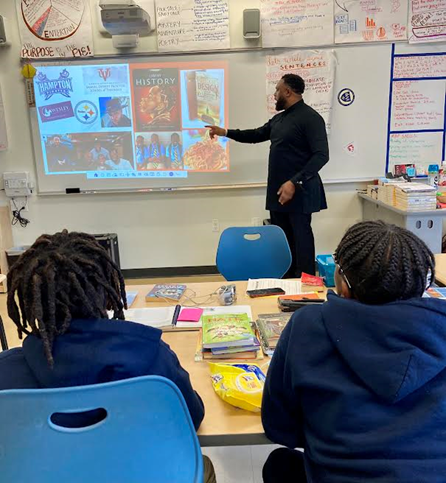



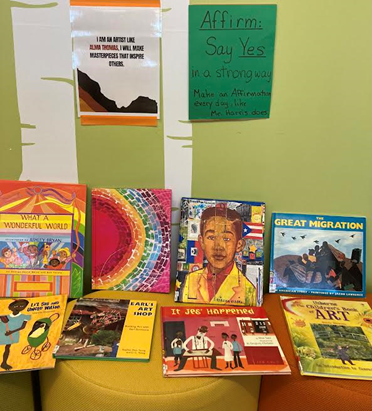

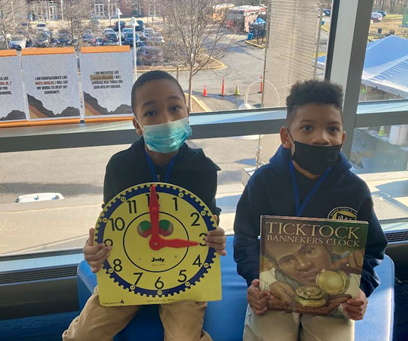

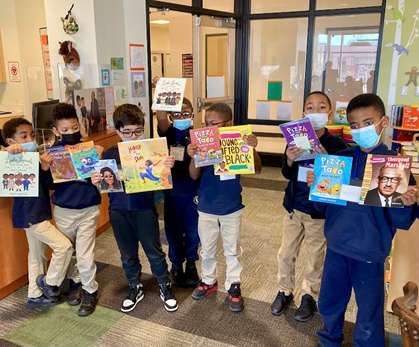



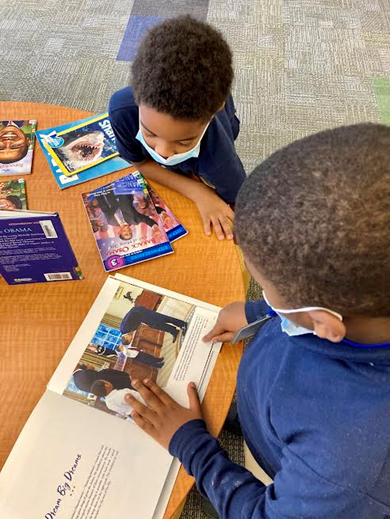

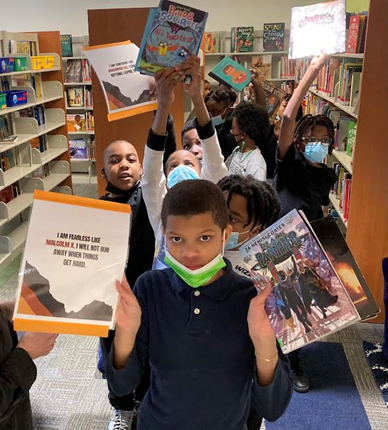







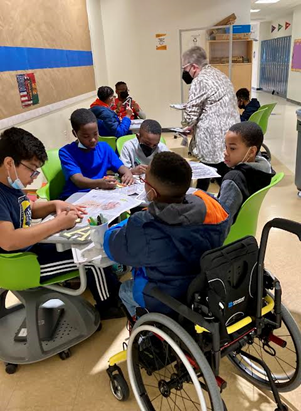



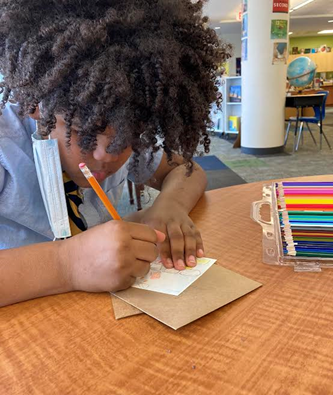





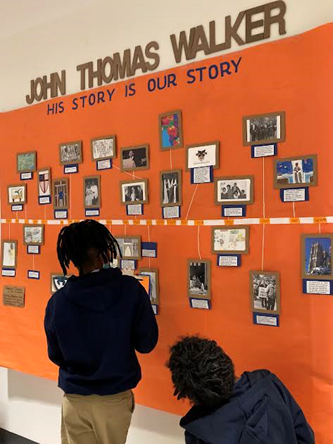



Comments